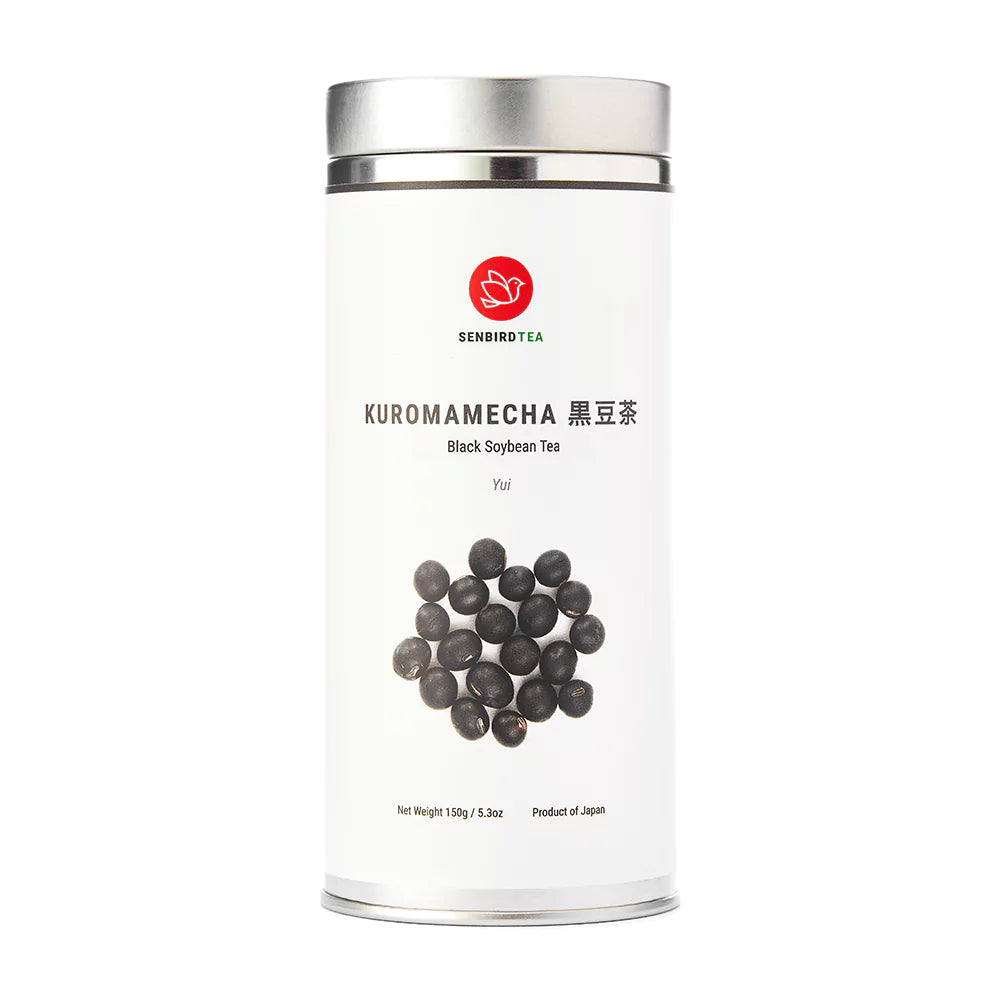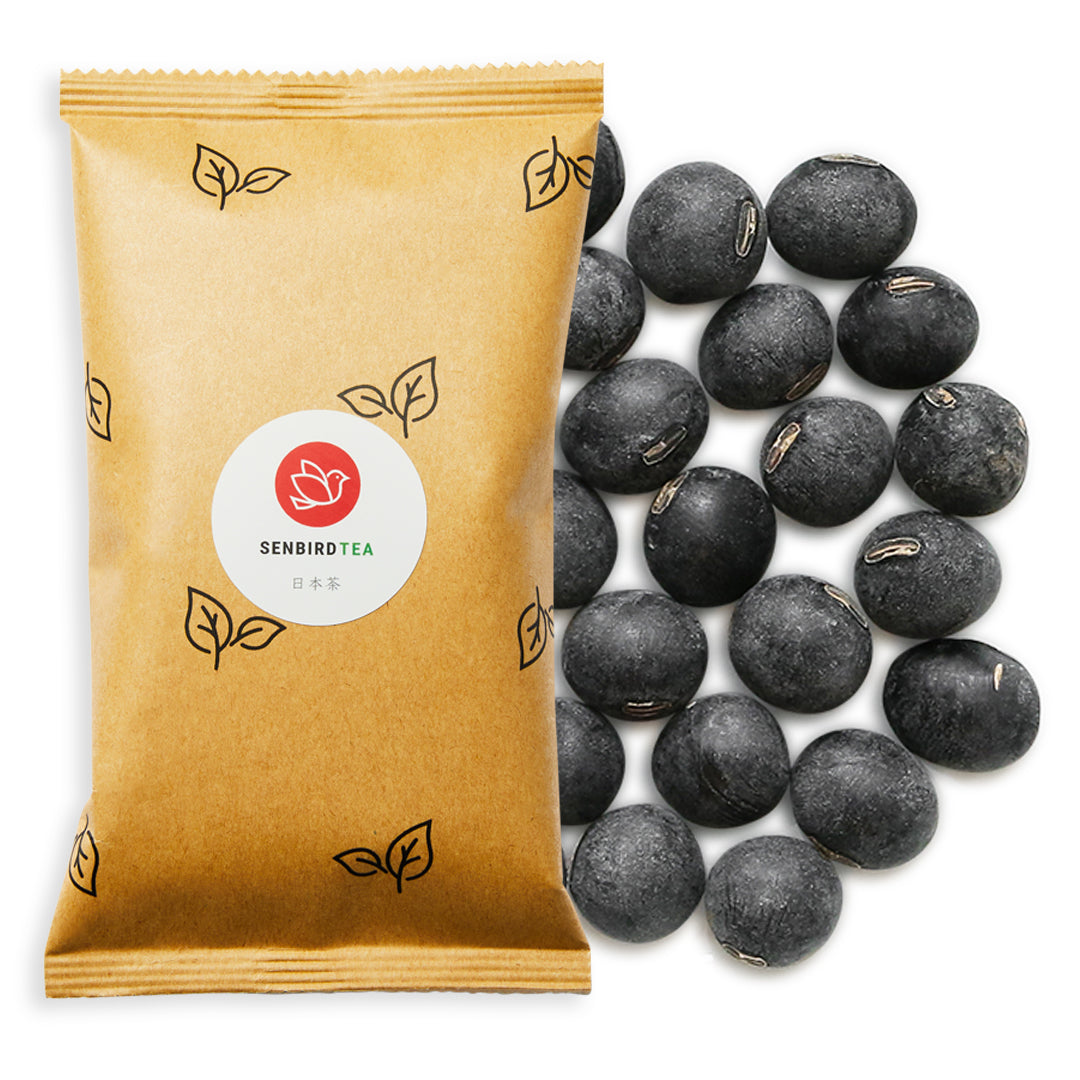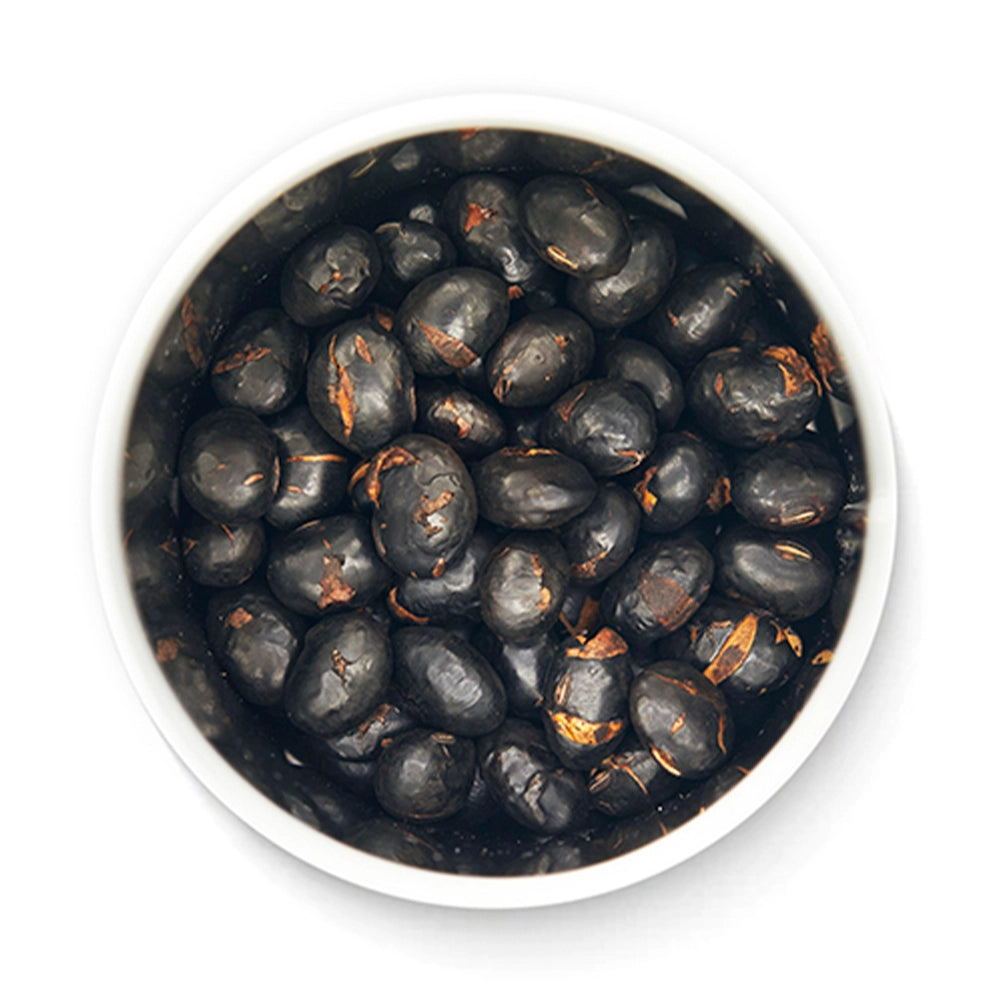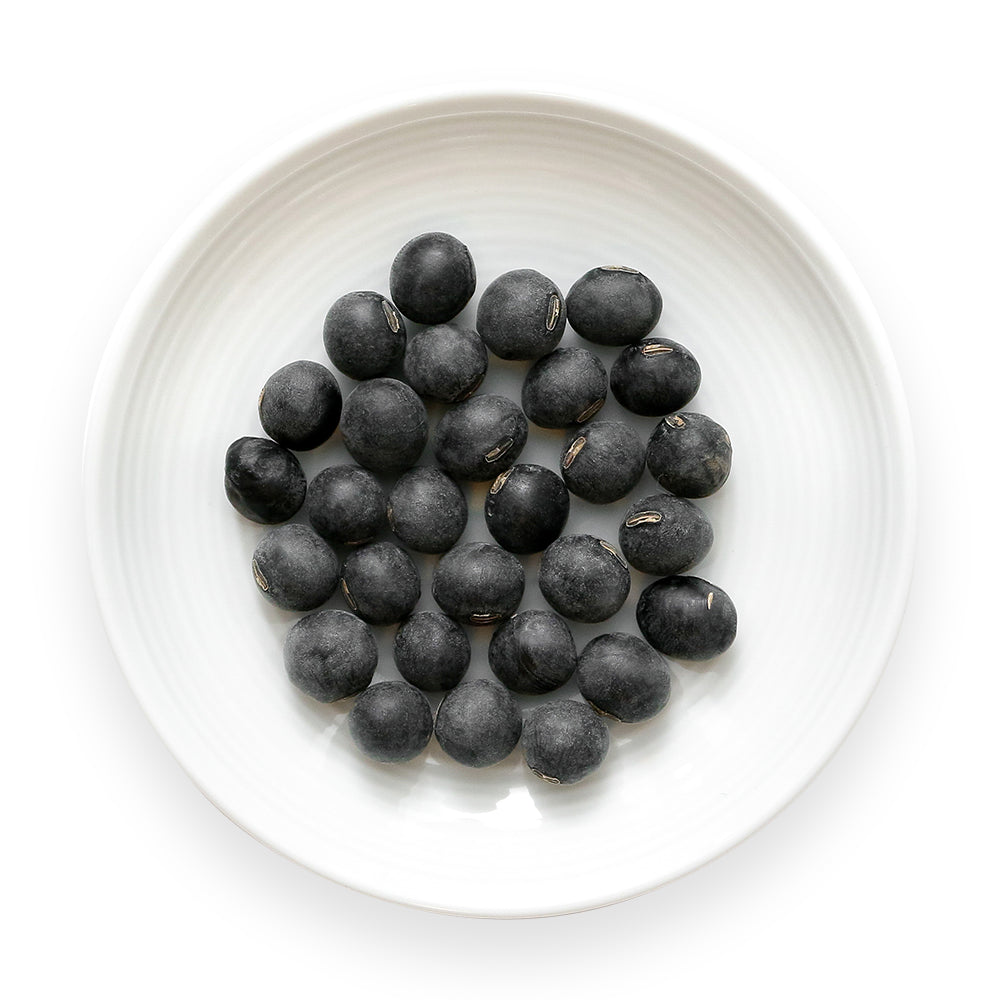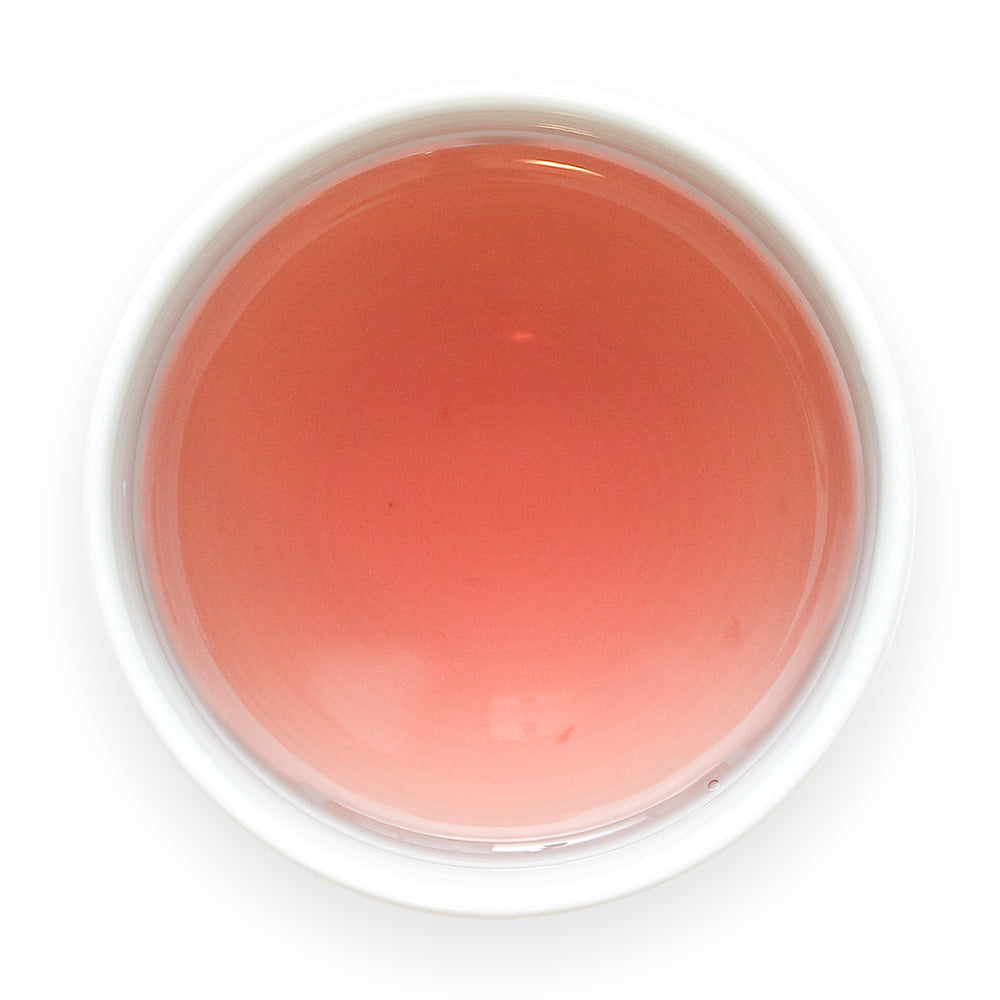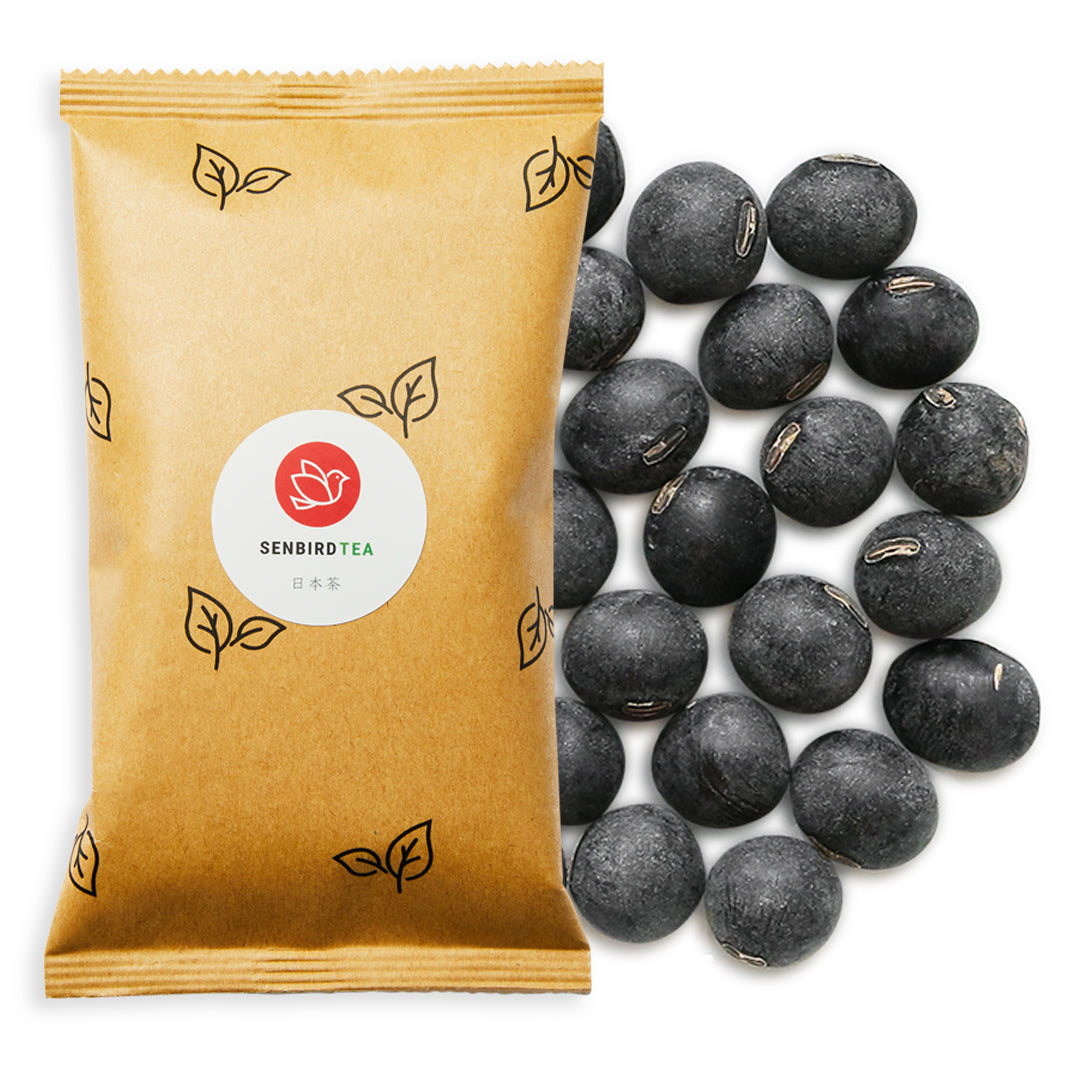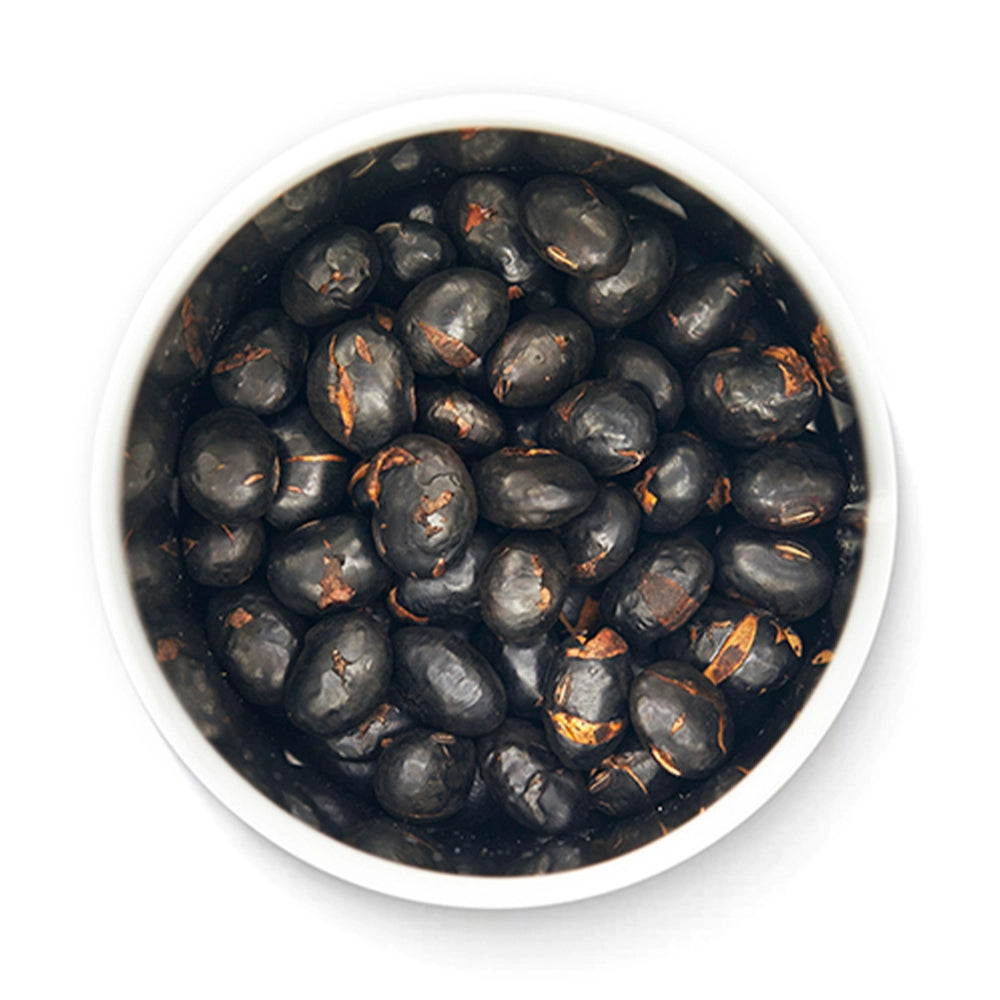
8 Delicious Ways to Eat Leftover Kuromame Black Soybeans After Brewing
At Senbird, we believe in cherishing every part of the tea ritual, and that includes what’s left after brewing a cup of tea. After brewing a warm, grounding cup of Kuromamecha Yui, our caffeine-free black soybean tea from Hokkaido, you're left with beautifully tender, roasted black soybeans.
These deeply roasted soybeans can be enjoyed as a crunchy snack before brewing. Once steeped, they soften into a wholesome, satisfying bite that can be eaten whole. Made from premium black soybeans, Kuromamecha is naturally rich in fiber and essential nutrients like potassium, calcium, iron, and riboflavin. It supports skin health, hormonal balance, and metabolism, offering a nutrient-packed brew for overall wellness.

Reusing Brewed Black Soybeans in Japanese Recipes
Rather than discarding the black soybeans after brewing, this is an opportunity to enjoy them in other delicious ways with creative Japanese recipes. Still rich in nutrients and flavor, leftover kuromame beans can be transformed into nourishing rice bowls, traditional wagashi confections, or playful tea-inspired treats. It’s a simple way to practice Japanese tea sustainability and nourish your body a second time.
Before you begin, we recommend reviewing how to brew Kuromamecha to get the most out of each bean. Here are 8 simple and delicious Japanese recipes using black soybeans:

1. Sweet Simmered Kuromame for the New Year
In Japanese New Year celebrations, kuromame black soybean dishes take on special meaning. The black soybeans are often simmered in sugar, soy sauce, and a pinch of salt to create a glossy, sweet side dish. Eating kuromame during osechi ryori is believed to bring good health and a hardworking spirit. You can replicate this tradition using your leftover kuromame beans for a sweet, symbolic, and protein-rich dish.

2. Kuromame Black Soybean Furikake Rice Bowl
Looking for an easy way to enjoy leftover kuromame? Try making your own black soybean furikake, a flavorful Japanese rice seasoning. Simply mash or chop the brewed kuromame beans and mix with sesame seeds, bonito flakes, and a splash of soy sauce. Sprinkled over warm steamed rice, it adds umami, nutrition, and comfort, perfect for a nourishing lunch or light dinner.
For more furikake inspiration, explore our homemade furikake recipe using green tea leaves ›
 3. Kakigori with Kuromame and Azuki
3. Kakigori with Kuromame and Azuki
For a refreshing summer treat, add leftover black soybeans to kakigori, Japanese shaved ice. Paired with sweet azuki, matcha syrup, or condensed milk, the tender kuromame offers a delightful texture and a hint of roasted sweetness, turning your caffeine-free Japanese tea ritual into a seasonal dessert.

4. Kuromame Soybeans in Salads or Soup
Brewed Kuromame soybeans are not only tender and satisfying, they're also rich in fiber and plant-based protein, making them a perfect addition to salads or soups. Toss them into a chilled soba noodle salad with fresh greens and seaweed, or pair with a light sesame or citrus-based dressing for a refreshing, nourishing dish. They also blend beautifully into miso soup or a clear broth, adding depth and nutrients to every spoonful.
Looking for more inspiration? Try our Japanese soba salad with sesame dressing ›

5. Sweet Japanese Treat Pairings with Tea
In traditional Japanese confectionery, or wagashi, black soybeans are often celebrated for their natural sweetness and symbolic meaning of health and resilience. After enjoying your cup of Kuromamecha, try making black soybean mochi, a soft, chewy Japanese sweet that pairs beautifully with tea. Just fold the roasted kuromame into warm mochi dough or press them gently on top for a more traditional finish. The earthy sweetness of the beans complements the mochi’s texture and makes for a comforting, caffeine-free treat to enjoy with your next cup.

6. Yokan with Black Soybeans
Yokan is a smooth, jelly-like dessert made from red bean paste, agar, and sugar. Black soybeans are often added for a pleasing bite and visual contrast. Their roasted flavor and subtle sweetness enhance the clean, delicate taste of this elegant sweet.

7. Kuromame Daifuku
Daifuku is a soft mochi filled with sweet red bean paste, and kuromame is sometimes folded into the filling or pressed into the mochi itself. The combination of chewy texture and earthy beans makes for a balanced, nourishing treat with just the right hint of sweetness.

8. Dorayaki with Kuromame Filling
In this classic Japanese snack, two fluffy castella-style pancakes sandwich a sweet filling. For a tea-inspired twist, mash your leftover kuromame beans with a touch of honey or maple syrup to create a naturally sweet, protein-rich paste. It’s the perfect companion to an afternoon cup.

Enjoying Every Last Bean: From Cup to Kitchen
In every cup of Kuromamecha, there’s more than just tea, there’s an opportunity to nourish yourself and make the most of a high-quality, nutrient-rich ingredient. By reusing the tender black soybeans in these creative black soybean recipes, you extend the tea ritual beyond the cup and into the kitchen in a way that honors Japanese traditions and culinary care.
Whether you’re crafting a sweet daifuku or adding a handful to miso soup, these leftover kuromame recipes help you enjoy every last bean, supporting your wellness and deepening your connection to each brew.
Because with Kuromamecha, enjoyment doesn’t end with the last sip, it continues, one delicious bite at a time.
Browse our full Japanese tea collection →
🍵 Drinking our tea? Snap a pic and tag us on Instagram at @senbirdtea or #senbirdtea. We’d love to see your moment with tea!
If you want more about this tea and delicious recipes, explore them here:
- Kuromamecha Black Soybean Tea Benefits
- 7 Healthy Caffeine-Free Herbal Teas for Natural Detox
- 12 Recipes With Green Tea For Delicious Meals And Desserts
- 3 Green Tea And Cheese Pairings That Are Surprisingly Delicious
- Furikake Rice Seasoning Recipe: How to Make Furikake With Used Green Tea Leaves
- Ochazuke Green Tea Over Rice Recipe
Share your moment with us and stay connected on:
